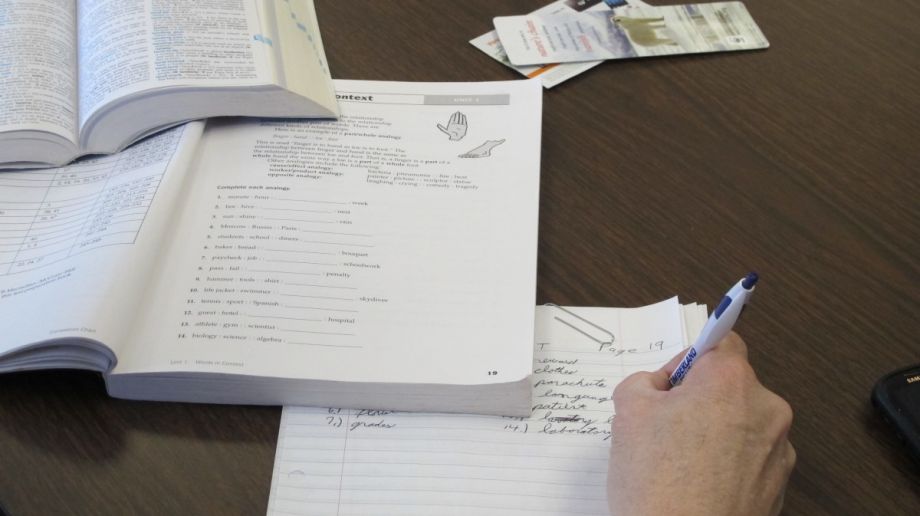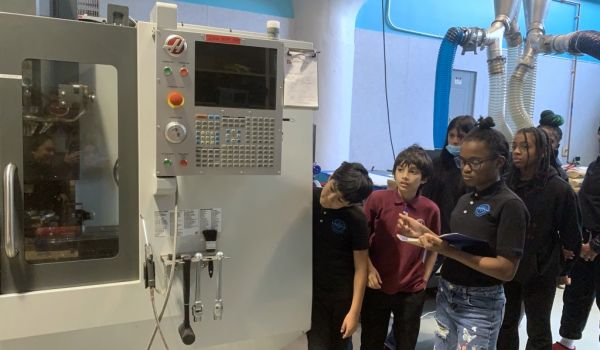Stanley Richards was one of thousands upon thousands of people who took and passed the General Educational Development (GED) exam in New York state. It put him on the path to earning a college degree while still behind bars. He was one of the last inmates to benefit from a state-funded higher education program for prisoners that was terminated in the mid-1990s, the “tough on crime” years. After his release, he retrieved his son from the foster system, got married and raised three more children.
Richards is now senior vice president at The Fortune Society, which provides housing, education, training and other support for individuals recently released from prison in New York City. Every Thursday, he leads the weekly house meeting of residents at a complex in Manhattan.
But the very thing that Richards credits for starting him on the path to where he is today, is no more: N.Y. state technically discontinued the GED exam in 2014.
The beginning of the end was in 2011. That’s the year when the American Council on Education, the 100-year-old nonprofit that created the GED, entered into a partnership with Pearson, a publicly traded multinational corporation that calls itself the “world’s learning company.” The partnership was ostensibly intended to update the GED exam to reflect the emerging “Common Core” standards for education. It also resulted in plans to double the price per GED test-taker starting in 2014.
In New York, as in other states, the law forbids charging fees to high-school equivalency test-takers. The state foots the bill, and the N.Y. State Education Department decided it couldn’t stomach the price increase. They put out an RFP in 2012, searching for a replacement test that could meet its standards at a much lower price per student. Two groups responded, and the winner was CTB-McGraw Hill, another corporation, which proposed a plan to create the Test Assessing Secondary Completion or TASC exam. The first TASC exams in New York were administered in January 2014, which made New York the first of around 20 states that have implemented alternatives to the costlier GED exam, which held a monopoly on high-school equivalency exams beginning in the 1940s.
Now the results of this change are coming in: Far fewer New Yorkers are taking the new TASC exams, and they are not passing them at the same rates as they were the earlier GED exams, according to a new report from the NYC-based think tank Center for an Urban Future.
Initial test-taker drop-offs in 2014 were understandable, the report allows, given that there was a huge statewide push in 2013 to get as many folks through the GED before the switch, but test-taking numbers have not returned to pre-2013 levels. Pass rates are also notably lower — 50 percent in 2014 and 53 percent in 2015, compared with an average 57 percent over the last five years of the GED. New York’s average is already among the lowest in the country; the national average for GED test-takers is 73 percent.
More than half of New York state’s high-school equivalency test-takers are in NYC, the report notes; out of the five counties with the lowest pass rates, four are boroughs of NYC. The Bronx had the lowest county pass rate in the state, at 40 percent.
Center for an Urban Future notes that the decline in test-taking and pass rates is a national problem, not one limited to New York. As a result of updating the GED to reflect Common Core standards, test administrators nationwide have reported that students are finding the GED test more difficult as well.
With fewer test-takers and lower pass rates, the bottom line in New York is that over the first two years of TASC exams, an average of around 12,000 test-takers a year are passing the exams, compared with an average of 25,074 in the five final years of the GED.
According to Rochester’s Democrat & Chronicle, Jonathan Burman, of the state’s education department, “wrote that the state is committed — ‘with existing resources’ — to training instructors and publicizing resources for the free exam.” Center for an Urban Future’s report suggests that more investment in test prep is needed.
The full ramifications of the latest numbers could still be years away, as employers begin to suffer from a shortage of workers with at least a high-school equivalency credential.
“A shrinking pipeline of diploma-holders undercuts the availability of such workers, especially in the so-called ‘middle-skill’ occupations with educational credentials beyond high school but short of a bachelor’s degree, such as paramedics, machinists and medical secretaries,” writes Tom Hilliard, author of the report, in an op-ed for The New York Daily News.
There may be more changes, good or bad, on the horizon. The N.Y. State Education Department recently issued another RFP for a high school-equivalency exam vendor. The deadline for submissions was earlier this month.
The Equity Factor is made possible with the support of the Surdna Foundation.

Oscar is Next City's senior economic justice correspondent. He previously served as Next City’s editor from 2018-2019, and was a Next City Equitable Cities Fellow from 2015-2016. Since 2011, Oscar has covered community development finance, community banking, impact investing, economic development, housing and more for media outlets such as Shelterforce, B Magazine, Impact Alpha and Fast Company.
Follow Oscar .(JavaScript must be enabled to view this email address)

















